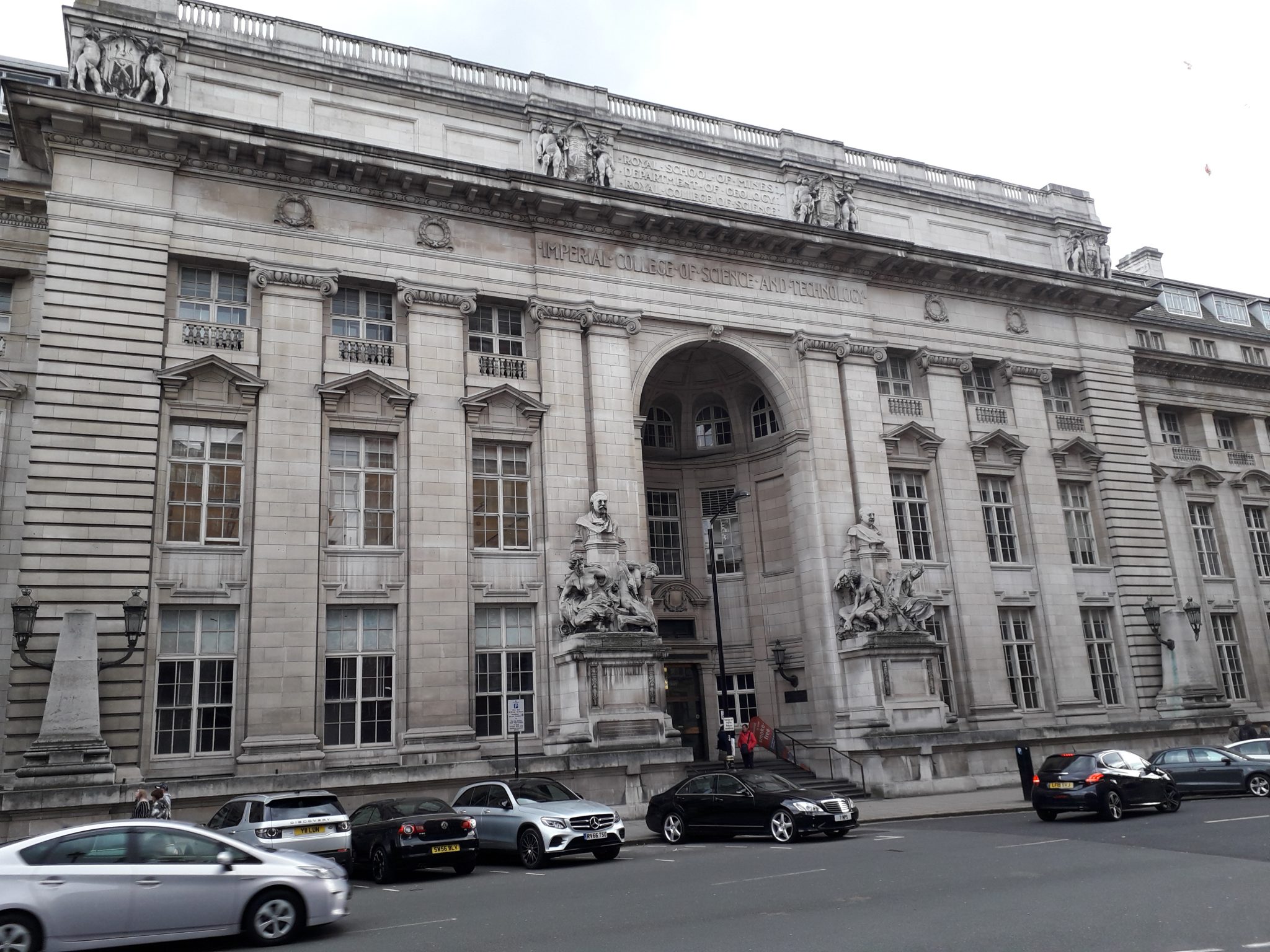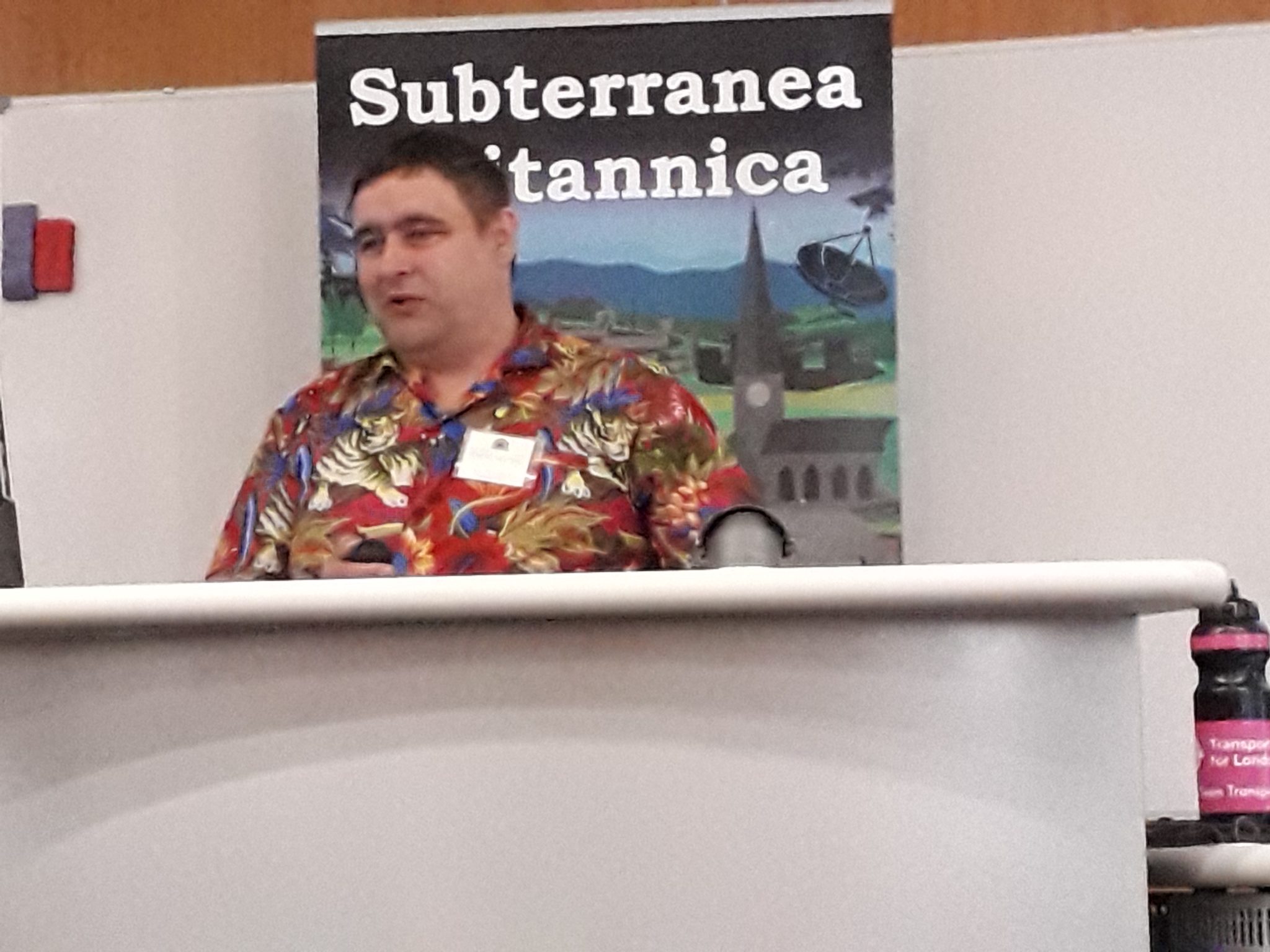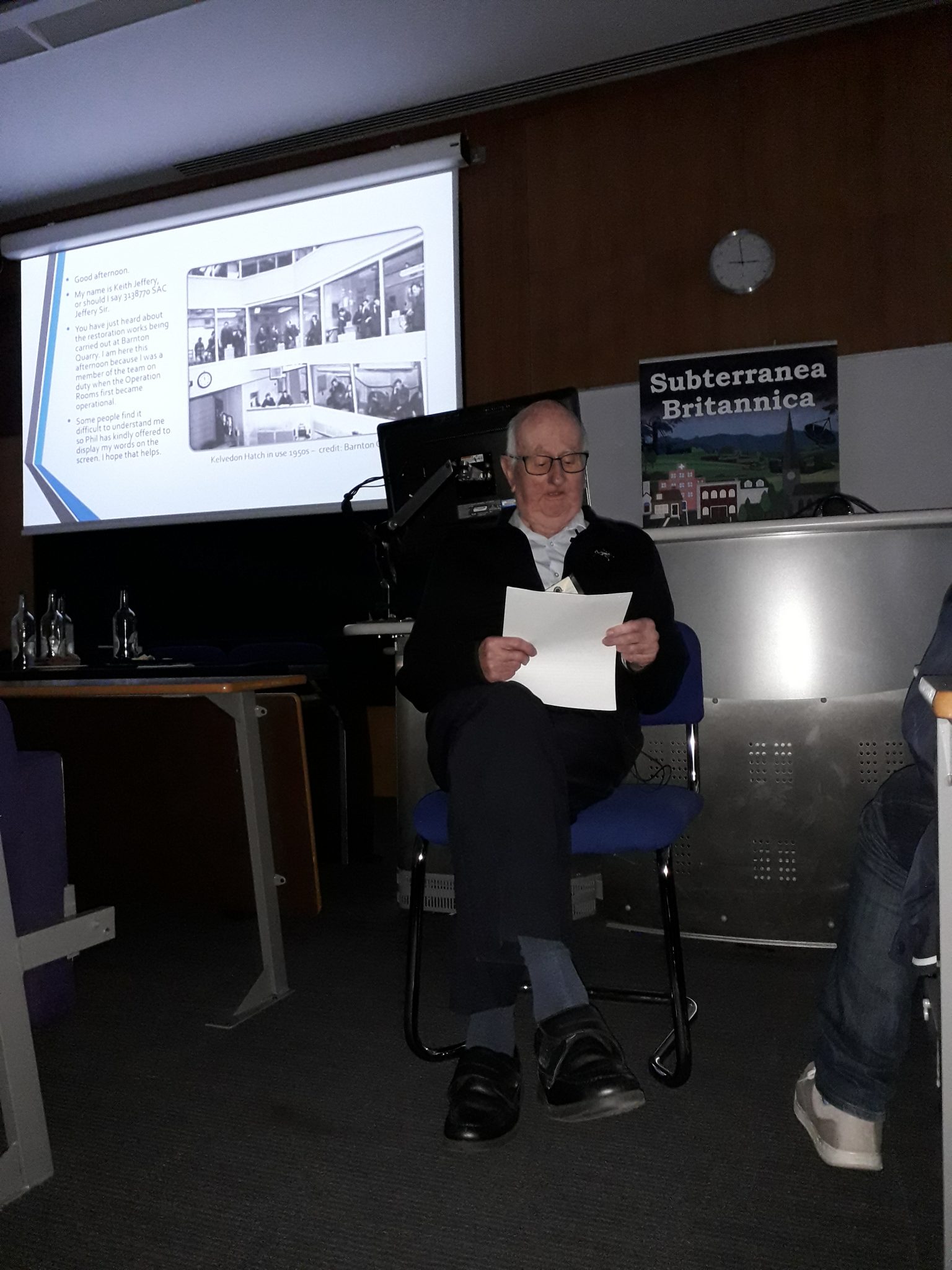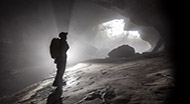Peter Burgess hears about ritual protection marks, cars going underground, time capsules and threats from out east in the Subterranea Britannica spring meeting at the Royal School of Mines in London.

It has been over 25 years since I stopped my regular attendance at the bi-annual lecture meetings of Subterranea Britannica. In the intervening years, SubBrit has kept up its tradition of holding these meetings, one in the spring and one in the autumn, where speakers on a wide range of subjects are invited to attend and entertain delegates. The organisation specialises in the study of man-made and man-used underground space, and therefore the scope for available subject matter is especially wide.
The 2019 spring meeting was held in London at the Royal School of Mines on 27th April, a venue that I attended several times in the 1980s when SubBrit members were fewer but just as individual in their specialisations as they are today.
The event started with the 2019 annual meeting. With consummate ease, Martin Dixon, the chairman, completed the meeting within 15 minutes and on time, despite there being a delay of ten minutes while the on-site technicians fixed the faulty sound system.

The lecture programme started with, for me, the most fascinating of all the presentations, which was a detailed account of how members Ed Waters and Hayley Clark were on a SubBrit visit to the caves at Creswell Crags in 2018, and spotted what they recognised as witch marks, or ritual protection marks carved into the limestone wall of one of the caves. A quick mention of this to the cave guide at the end of the visit was the trigger for what followed: a message to the chairman of SubBrit with a request to be put in touch with the “two who spotted interesting marks on the cave walls.”
This in turn allowed the rest of the caves to be checked for marks, and culminated in a high-profile media release event, with photographs of the inscriptions being published nationally and abroad. It appears that interest in the search for and study of these ritual marks in underground sites is finally taking off, giving us a fascinating insight into the habits and practices of our forebears, and their sincerely held belief in the supernatural. The presentation caused a good number of questions to follow, and a greater awareness by those present of the sorts of things that might be found in some of our older underground structures.
The speaker that followed was Rob Lewis, of TotalSim, a partner in Aero Research Partners. Rob is driving a project to convert a 3000-yard long tunnel in the Midlands into a vehicle test facility for cars. Catesby Tunnel was completed in 1897 and closed in 1966, and left to decay. Now it is the site of an ambitious scheme to convert it into an underground vehicle test facility where new cars can be aerodynamically tested in closely controlled conditions, using the length of the tunnel as a test track.
The constant conditions will allow much better measurements to be made with maximum repeatability, something that is much harder on an open-air track, and more realistic than can be achieved in a wind tunnel. The constant temperature, humidity and gradient make the tunnel an ideal site for the project. Rob described in detail the challenges of preparing the structure and the physical approaches to the tunnel, and the multi-million pound funding requirement. Ultimately, the purpose of the project is to provide a UK-based facility to help motor manufacturers minimise carbon dioxide emissions from new car models.
Following lunch I had the opportunity to give a short presentation on recording work in Surrey, searching for and recording inscriptions in the 16th and 17th century quarry workings at Chaldon. Thanks to the earlier talk by Ed Waters, no explanation of the background was necessary!
The afternoon session was composed of SubBrit’s bread and butter interest – bunkers!
The first speaker was Grant More who is part of the team restoring the much-damaged ROTOR bunker at RAF Barnton Quarry near Edinburgh. Grant provided an introduction to the ROTOR program of the 1950s which saw a chain of control and monitoring stations around Britain to counter the threat of Soviet nuclear bombers. The system became redundant after advances in radar technology, and the Soviet Union introduced much faster bomber aircraft, followed by the inter-continental ballistic missile.
The bunker at Barnton Quarry was decommissioned by 1961 but remained part of the network of bunkers to protect the UK’s national infrastructure, with regional seats of government and related sites. In 1983 it was sold to the local council, who sold it on to a developer in 1987, but plans to reuse the site failed, and a disastrous fire swept through the bunker in 1993.
The site was heavily plundered for scrap, and when the restoration team commenced work, the task was formidable. Nevertheless, the results are impressive. Floors have been reinstated, ducting has been completed, water supply, power and drains are all fixed, and the site is well on its way to becoming a very good visitor attraction, the focus of which will be to present the threats of the Cold War and how the UK responded.

What followed was quite unexpected by me. A chair was brought to the front of the theatre and a senior gentleman came forward and sat facing the room. Keith Jeffrey started his National Service at the start of 1953, and was posted to RAF Barnton Quarry as a fighter plotter. His memories presented a fascinating insight into the day-to-day operations of a ROTOR bunker, and we were enthralled by his every word. He had indicated that he would have liked to serve as a fighter plotter, in the expectation that he could serve his time at a site conveniently close to his home, but was instead sent over 400 miles away to Barnton Quarry!
The final presenter was Lars A Hansson, from Sweden, who runs a bunker tours enterprise. Lars took on the wide subject of Nordic fortifications. First, we had a short introduction on several hundred years of border changes, conquest and alliances, culminating in the present post-Cold War wariness of Russian intentions. This gave us the context for much of the rest of the lecture, where we were presented with the story of numerous forts across Norway, Denmark, Sweden and Finland. We were shown huge gun emplacements now preserved, complete with their impressive guns, bunkers and subterranean aircraft silos.
There was one final brief member’s communication, from Chris Gray. In 1983, Chris witnessed the opening of a vault beneath a church in Chester-le-Street. He described what was found, and included several photos of badly decayed coffins. The vault appears to be the final resting place of several members of the Hedworth family. There was a time capsule from the 1920s, which was left by a local builder who seems to have been employed to add a brick vault lining to the cavity. Another time capsule was left by the 1983 researchers, and the vault has not been opened since.
I was very pleased to be able to attend the meeting, and after so many years, nothing much appears to have changed apart from the colour and reduced quantity of the attendees’ hair. That said, there were an encouraging number of younger members taking part, and the organisation is thriving.
